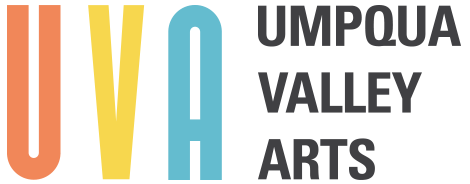North County
NORTHERN HIGHLIGHTS

PASS CREEK PARK
Northern Douglas County is home to several historic covered bridges, including the Pass Creek Bridge in Drain, which dates back to the 1920s and makes a fantastic focal point for paintings. This day use park and campground provides a recreational oasis in northern Douglas County.

city of drain
Drain, Oregon, is a charming small town nestled in the rolling hills of northern Douglas County, offering artists a mix of scenic landscapes and historic architecture to capture on canvas. The town is home to historic Charles & Anna Drain House. It is the finest example of the proportion and ornamentation characteristics of the Queen Ann architectural in the city. The building is listed in the 1976 Statewide Inventory of Historic Sites and is also listed in the National Register of Historic Places.


Mildred Kanipe Park
Mildred Kanipe Park is 1,100 acres of a historical working ranch with old farm machinery on display, 14 miles of extensive trails through Douglas fir forests and oak woodlands, creeks and spectacular views.

Historical Oakland
Oakland, Oregon was the first city to be placed on the state’s historic register, in May 1968. The city’s two-block business district consists of the original brick buildings built in the 1880s and 1890s.


Plat I Reservoir
Plat I Reservoir, located just outside Sutherlin, Oregon, is a peaceful and scenic destination that offers artists a diverse range of subjects to paint. The reservoir’s calm waters reflect the surrounding rolling hills, creating stunning mirror-like compositions, especially during sunrise and sunset.

Ford's Pond
Located on the west side of Sutherlin, the 202-acre Ford’s Pond Community Park is home to the 95-acre Ford’s Pond. It features three habitats: wetlands, willow/ash riparian, and oak savanna. Discover the unique flora and fauna found in each. Ford’s Pond is a stopover for many birds migrating between summer and winter destinations.

EVENT SPONSORS
Support Those Who Support Us
Special Thanks to These Community Partners
Land acknowledgement
UVA acknowledges, honors and respects the indigenous people of this region, the Umpqua People, on whose ancestral lands the UVA building now stands. These include the Nahank’ uotama (Cow Creek Takelma) and the Upper Umpqua Peoples who later became the Cow Creek Band of Umpqua Tribe of Indians and were incorporated into the Confederated Tribes of Grand Ronde.
The Cow Creek Tribal areas include the Cascade and Coast Ranges in Southwestern Oregon, along the South Umpqua River, and its primary feeder stream, Cow Creek. This tribal area includes the Umpqua watershed and surrounding areas. The Indigenous peoples of the Umpqua Valley never surrendered lands or resources to the United States and there are Indigenous communities nationwide that are actively fighting for the preservation of sacred lands.
UVA gratefully recognizes that the Umpqua Valley is made up of many diverse communities of indigenous peoples who continue to live, work and thrive in these lands today.
We invite you to join us in acknowledging all of the above as our shared responsibility and to consider our roles in healing the wounds of the past, so we continue to build a brighter tomorrow.
Land acknowledgement
UVA acknowledges, honors and respects the indigenous people of this region, the Umpqua People, on whose ancestral lands the UVA building now stands. These include the Nahank’ uotama (Cow Creek Takelma) and the Upper Umpqua Peoples who later became the Cow Creek Band of Umpqua Tribe of Indians and were incorporated into the Confederated Tribes of Grand Ronde.
The Cow Creek Tribal areas include the Cascade and Coast Ranges in Southwestern Oregon, along the South Umpqua River, and its primary feeder stream, Cow Creek. This tribal area includes the Umpqua watershed and surrounding areas. The Indigenous peoples of the Umpqua Valley never surrendered lands or resources to the United States and there are Indigenous communities nationwide that are actively fighting for the preservation of sacred lands.
UVA gratefully recognizes that the Umpqua Valley is made up of many diverse communities of indigenous peoples who continue to live, work and thrive in these lands today.
We invite you to join us in acknowledging all of the above as our shared responsibility and to consider our roles in healing the wounds of the past, so we continue to build a brighter tomorrow.









